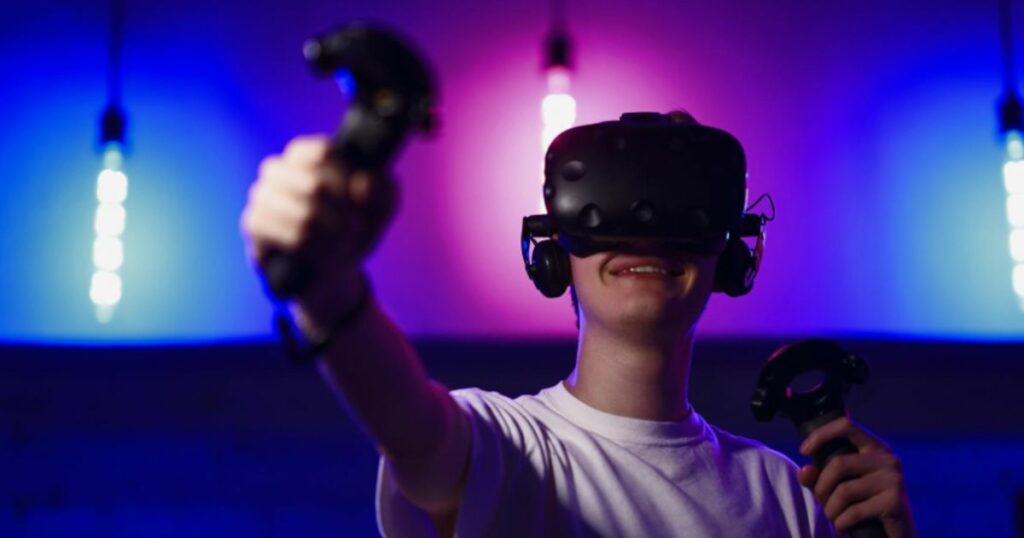Once considered a far-fetched concept, VR has evolved into one of the modern-day innovations redefining the gaming industry. What was once an experimental piece of technology has grown into such immersive technology that players can dive into virtual worlds and interact with their surroundings in ways they never have. The VR world of gaming really has evolved, and it will be interesting to see how things develop with this technology and what the future holds.
Hardware and software improvements, coupled with ever-increasing demand for realistic experiences, have influenced the evolution of VR games. The early attempts at VR gaming were hampered by bulky equipment, pixelated graphics, and limited ranges of motion. However, high-performance headsets, motion controllers, and haptic feedback systems have opened up an avenue for games that are ever so realistic and much more participative. Today, players can battle monsters, explore new galaxies, and even visit virtual casino from the comfort of their homes.
The Early Days of Virtual Reality Gaming
In the 1990s, VR was often viewed as a gimmick, with arcade-style experiences that didn’t quite live up to the hype. Early attempts at the technology, such as Sega’s VR Headset and Nintendo’s Virtual Boy, did not quite see much commercial success.
At that time, the technology was still far from being mature enough to produce seamless, immersive experiences gamers wanted to have. High costs and technical limitations at that time meant only a niche group of enthusiasts could afford to dive into virtual worlds.
Despite that, developers did not give up, and modern VR was going to see the light of day. By the middle of the 2010s, Oculus, HTC, and PlayStation revolutionized the industry with high-end headsets and reasonably priced equipment, letting VR gaming into every man’s living room.

There were also a large number of games that came along new genres like puzzle-solving adventure games to hyper-realistic shooters.
The Rise of VR Games in the Modern Era
Most particularly, the improvement of VR, graphics, motion sensors, and user interfaces are interconnected. These improvements made this experience much smoother and actually allowed gamers to be involved in a world of detailedly designed environments that are both visually and physically realistic.
The biggest turning point in how VR was used for gaming came with the introduction of motion tracking systems. This allowed users to act within their space and virtually see the movement of their character, hence increasing their presence and control.
It has also been a revelation that, with the development of multiplayer VR games, players can now play together or in opposition in shared virtual spaces, and the scope for interaction within a social gaming context is becoming significant. VRChat enables users to create their own avatars and join others from all over the world, while Rec Room and Population: One are among those that support multiplayer interactions in immersive virtual worlds.
What’s Next for Virtual Reality Gaming?
Continuous upgrading of technology makes the future even brighter. A huge scope lies in the field of virtual reality gaming through the incorporation of AI and machine learning. Such technologies will be able to facilitate the introduction of more dynamic and adaptive gaming worlds, where in game characters and events respond in real time to the player’s next move, thus making each session distinct.

A significant trend is the development of Augmented Reality (AR) and Mixed Reality (MR) technologies. These are technologies that combine the virtual with the real world, enabling players to interact simultaneously with both digital components and physical objects. Just think about playing a game where virtual monsters appear in your living room or solving puzzles in which real-world objects are part of the game.
In a Nutshell
The journey of evolution for virtual reality games from the experimental concepts of the early days to today’s immersive, multiplayer games has been nothing short of amazing. And as technology continues to evolve, so does the expectation for more sophisticated game development that will push the envelope even wider on what can be achieved in virtual worlds.
From AI-driven interactions to the merger of spaces between the virtual and physical, the future of VR gaming doesn’t cease being simply exciting, right to the point of being unpredictable. VR has clearly established itself as a game-changing force; what comes next is sure to captivate players for years to come.

